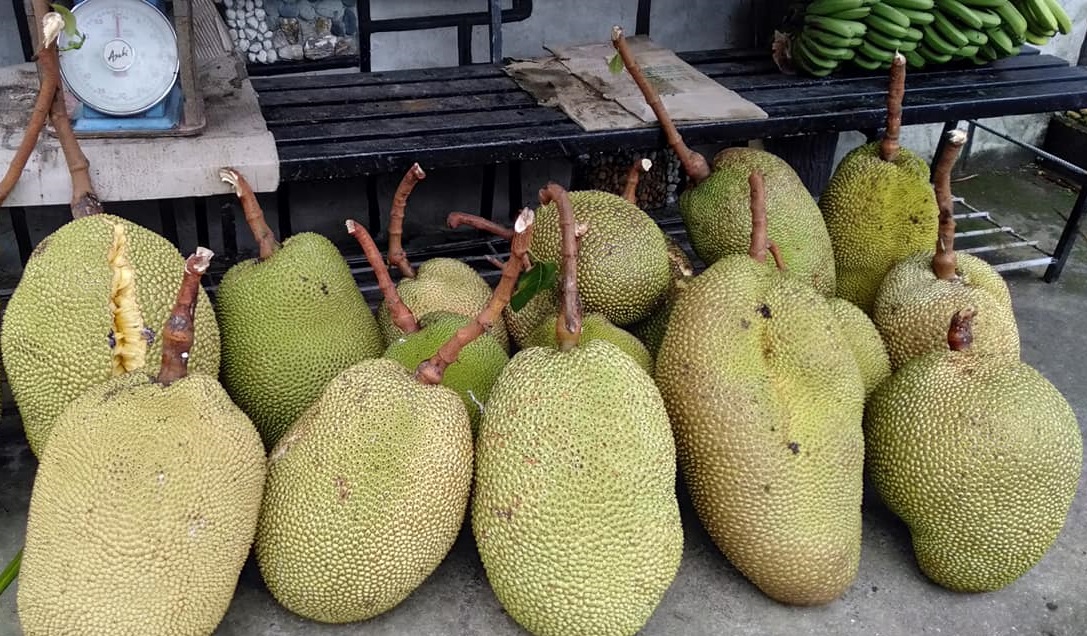
Eric Munene grew up with several jackfruit plants in his homestead in Kibugua region of Chuka, a town on the eastern slopes of Mount Kenya. However, it was only recently that he began to recognize it as a valuable plant.
The jackfruitis a multiple fruit consisting of several small one-seeded fruitlets. The entire fruit weighs 4.5-50 kg and is oval, oblong or ellipsoid in shape. The fruit, which is covered by a rubbery rind and hard spines is pale or dark green when young, greenish-yellow, yellow or brownish when mature.
Once unknown to a majority of Kenyans, the jackfruit’s popularity has grown tremendously thanks to the explosion of roadside sellers in Nakuru, Sagana and Mombasa. For Munene, whose family had grown tired of the sugary fruit, the new demand prompted him to plant more trees, and he is already reporting improved incomes as the market remains constant all year round.
Related News: FarmBiz TV:Mighty jackfruit is a Sh250k-a-year tree in Mombasa.
Related News: The Kenyan farmers pioneering dragon fruit farming—the Sh1000/kg fruit
“Growing up, we had more of the fruit than we could use, and because it was a common plant in our neighbourhood, we did not see any commercial value in it. Often, we would have the fruits rotting as we fed some to cows,” said Munene.
Munene’s attitude to the plant changed in 2008, when, as a university student, he visited Mombasa to find fruit vendors selling a sliceof the fruit at KSh100.
“I was shocked that a fruit we found useless in my home area was fetching almost KSh1000 in Mombasa. More surprising was the fact that there were ready buyers for it,” he said.
He later went back home and planted more jackfruit, to increase his family’s tree count to 30. Today, Munene harvests up to 3000 fruits per season, each fetching him KSh400 at the farm.
“It is a profitable venture from where I stand because the crop does not require any intensive management. Often, the biggest task required of me is to harvest,” said Munene.
Yet, he is not the only one who is gaining from the explosion in demand for the fruit. In Baringo County, several farmers who planted the tree less than a decade ago are unable to satisfy the interest rising in Nakuru town.
A roadside market coming up between Nakuru’s Sobea and Ngata Bridge regions has excited the attention of enthusiastic travelers with the jackfruit as an additional product to the now popular watermelons.
“We have several farmers in Baringo who supply us with jackfruits. We just recently discovered the fruit but it is selling really well here,” said Mary Wairimu, who sells a mature jackfruit at an average price of KSh650. The farmers, in Baringo, get KSh300-400 for each fruit.
Related News: Proper planting for over 10 tonnes from acre of sweet potatoes
The jackfruit grows in tropical, near tropical and subtropical regions. Propagated from seeds, the jackfruit starts producing after six years with each tree yielding 100 – 200 fruits per year. The tree requires little care and apart from the periodic application of fertilizer, the jackfruit is self-sustaining.
For jackfruit seedlings and more information on its care, reach out to the Kenya Agricultural and Liverstock Research Organization (KALRO) via phone: +254 202176420 or email: cri@kalro.org